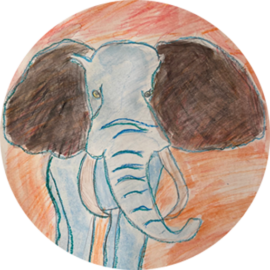Managing Mozart
There’s a memorable scene in Milos Forman’s Amadeus (1984), where the emperor of Austria confidently tells Mozart that one of his compositions has “too many notes” and suggests trimming a few to make it perfect.
I recalled this line recently while listening to Ken Sandy speak about leadership. Ken is one of my favourite design thinkers, and his framework for managing creativity and execution struck me as both practical and profound. It starts by balancing two opposing forces:
• The power of imagination versus a keen eye for detail
• The ability to juggle multiple possibilities versus the need to align a team around a single solution and drive execution.
From these tensions, Ken identifies four distinct leadership modes:
The Explorer, driven by curiosity, is the mad-hat inventor pushing boundaries beyond most people’s comfort zones (think children, who default to this mindset, which makes them such fun).
The Analyst grounds ideas, scrutinizing the details and implications of what the Explorer conjures, defining clear specifications and data to guide decisions.
The Challenger plays the critical role of the no-sayer, raising hard questions and reality checks (a role often outsourced to a ‘grump,’ like Dr. Nefario in Despicable Me).
The Evangelist, the showman, thrives in the limelight, rallying the troops and making bold, charismatic pitches (channeling a bit of Steve Jobs).
Just as with parenting, no single mode works in every situation. Leadership requires constant adaptability—knowing when to amplify or dial back each mode.
For instance, sometimes you need to play the Evangelist, hyping up the team to power through tedious but necessary work (like refactoring code). At other times, you need to embrace the Challenger, especially when the team gets lost in a false sense of invincibility during periods of success.
This dynamic interplay reminded me of Christopher Langton, a pioneer in artificial life. His work simulating living systems led him to a powerful insight: innovation thrives at the “edge of chaos.” Too much chaos and nothing can take form; too much order and nothing evolves. Langton uses the analogy of matter’s phases—gas, liquid, and solid—pointing out that the transitional liquid phase is where life (and innovation) flourishes.
It’s curious that the word liquid also holds positive connotations in economics. No one wants frozen assets or to see wealth evaporate—liquidity is always what you’re after.
Langton’s ideas about phase transitions echo Ken Sandy’s call for leaders to maintain a flexible, liquid mindset. When you’re fluid, you can focus on the global optimum, introduce flow to your team, and achieve a mental state akin to quantum superposition—capable of existing in multiple places at once, able to see all possibilities and execute the best path forward.
